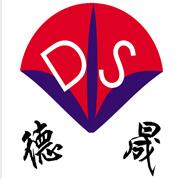- Biological buffer(21)
- Blood collection tube additives(12)
- Carbomer(2)
- trinder's reagent(9)
- Enzyme(14)
- Chemiluminescence reagent(9)
| Hubei xindesheng Material Technology Co., Ltd | |
|---|---|
| Country: | China |
| Tel: | +8618971041571 |
| E-mail: | zjing9632@gmail.com |
| QQ: | 2198447049 |
| Skype: | Chat Now! |
How to correctly choose Tris (77-86-1) and phosphate buffer
Release time: 2021-09-26
Tris and phosphate are very commonly used buffers. They have the same places and many different places. How to distinguish and choose correctly when using them has also stumped a group of people. Let’s start with their respective applications and use environments today. Let you feel the difference intuitively.
Tris buffer
In the electrophoresis buffer, it forms a buffer system with glycine to stabilize the pH; uses the Tris-HCl buffer system in the gel to stabilize the pH; it is widely used as a solvent for nucleic acids and proteins; the low ionic strength of Tris buffer can also be used for nematodes Formation of intermediate fibers; add EDTA to Tris hydrochloric acid buffer to make "TE buffer", which can be used for DNA stabilization and storage; change the pH-adjusting acid solution to acetic acid to obtain "TAE buffer", replace it with Boric acid is available as TBE buffer. These two buffers are often used in nucleic acid electrophoresis experiments.
Phosphate buffer
Generally active biological agents must be diluted with phosphate buffer solution. The reason is that it has a salt balance and a buffering effect that can adjust the appropriate pH value. Distilled water does not have a salt balance effect, which will destroy the structure and biological properties of biological proteins; physiological saline does not have the effect of adjusting pH, and it cannot ensure that it participates in biological reactions under optimal conditions for complete and active substances, so the use of PBS is Choose first. Of course, some biologically active substances require relatively high conditions, and more ingredients need to be added to the balance buffer to maintain proper conditions to ensure that the biologically active substances maintain their most complete characteristics. Therefore, PBS is mainly used for cell experiments, and its buffer range is most suitable for neutral (7.0).
In the biochemical experiment, the buffer solution should be carefully selected, not only the buffer range of the buffer solution, but also the use environment of the buffer solution:
1. Phosphate buffer solution has a relatively wide buffer range, but its buffering capacity is very small when the pH is above 7.5; Tris itself is alkaline, and the pH range from acidic to alkaline can be prepared only with Tris-HCl buffer system Buffer, the method is relatively simple, for different experiments, Tris can also be combined with other substances to form a variety of buffer systems.
2. Phosphate buffer solution is easy to associate with common Ca2+ ions, Mg2+ ions and heavy metal ions to form precipitates, while inhibiting certain biochemical processes and the activity of most enzymes, including kinases, phosphorylases, dehydrogenases, etc.; In contrast, the Tris buffer solution has little interference with the biochemical process, and does not precipitate with calcium, magnesium ions and heavy metal ions. If there are metal ions or enzyme preparations in the reaction system, Tris buffer solution is a better choice.
3. The pH value of Tris buffer is more affected by the concentration of the solution than that of phosphate buffer solution. When diluted ten times, the pH value of phosphate buffer solution changes less than 0.1, while the pH value of Tris buffer solution changes more than 0.1. Therefore, for reaction systems with large volume changes, Tris buffer should be used with caution.
4. In addition, the Tris buffer solution is greatly affected by the environment. Generally speaking, every time the temperature rises by one degree, the pH value drops by 0.03; at the same time, it is easy to absorb CO2 in the air, so the prepared buffer should be tightly sealed.

